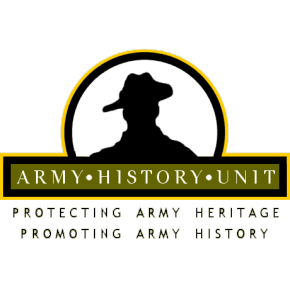The one day conference held on 12 November 2016 brought together a fascinating series of presenters and as with all MHHV conferences revealed some information gems.

MAJGEN Jim Barry in his welcome to participants at the conference, reminded all of when Professor Geoffrey Blainey launched our organisation in May 2011, he “challenged us to be relevant” and this conference fitted that challenge, not only to be relevant, but needed to be conducted. The conference covered an important and often overlooked aspect of military history, some of which will be disturbing, but needed to be addressed.

In setting the scene, the Keynote paper -‘The War Never Ends’ was delivered by Dr Michael McKernan, wherein he provided some poignant stories by Prisoners of War (POW’s) for ‘their war that never ended’. This outlined the widespread trauma of returned soldiers and in particular POWs as they faced immense psychological problems during re-entry into civilian life. Not least problems were caused by the pity of their families or blame for tragedies beyond their control – like the Fall of Singapore. Disabling PTSD was common and untreated because it was professionally unidentified. Possible benefits of returned men helping each other was thwarted because they were instructed not to discuss their experiences.

Major Craig Smith of the Australian Army History Unit spoke on his book ‘Aussie Soldier: Prisoner of War’ in relation to a huge number of individual stories that really only whetted the appetite for more detail. Major Smith graphically detailed the changes of state POWs in both world wars experienced as they transited through the incredibly dangerous process of capture to camp life to eventually coming home only to feel like strangers in their own land. Life in the camps was boring and in most cases attention was focussed around food because of the lack of it.

The second session covered WW I and was introduced by Dr Richard Trembath. Aaron Pegram, historian at the Australian War Memorial explored escape myths for prisoners of the Germans in both world wars noting that as a proportion of POWs, those attempting escape was vanishingly rare (at around 1%). Attempts to escape depended on the conditions prisoners experienced but mostly it depended on the presence of a highly dominant individual who was motivated to escape. In general the further from the front the less often escape was tried. This was in part because it was more difficult was transit through hostile territory without capture. But in addition the POWs were usually treated better the further they were from the front. Being released for day labour provided more variety and better food. They also had privileges which they stood to lose if escapes were made. Officers escaped much less frequently than private soldiers because they had most to lose.
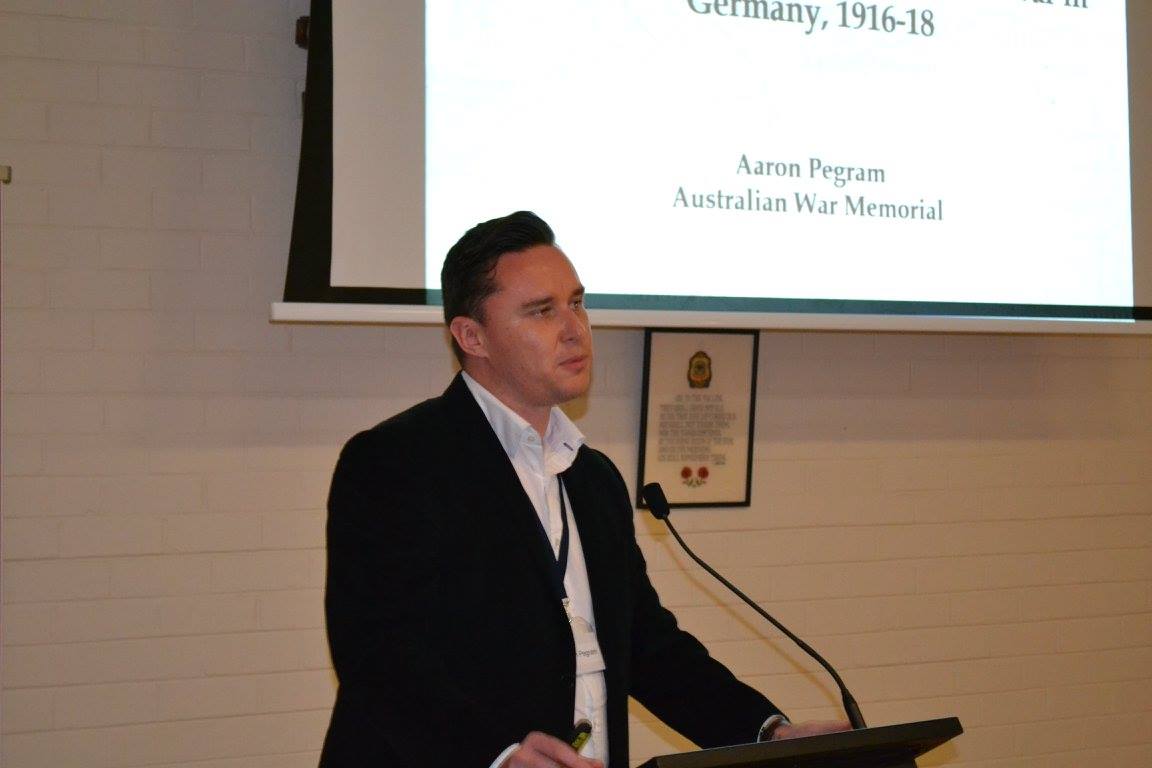
Dr Andrew Kilsby gave a critique of the conditions German internees found themselves in Australia in 1915. By and large, only a token number Germans were interned. The number was relatively small as there were simply too many in Australia round them all up and more importantly the government perceived little risk but had to be seen to be taking security measures. Most were community leaders (5,700) while 1,100 were captured from ships, such as the Emden and the Merchant ship, Pfalz. All lived under benign conditions – they could come and go on day leave, have their families with them and interact with the local community.

MAJGEN Mike O’Brien was session chair for the afternoon session, covering aspects of WW II: Author and Correspondent, Cameron Forbes, in ‘quietly’ speaking about the Japanese in SE Asia and their Burma Railway, presented an enlightening strategic overview of how we got to that point of the war. He discussed this in the context of the Burma Railway in which 12,000 Australians died.

Dr Peter Monteath highlighted the variability of POW experience by following Australian Johnny Peck. Peck was caught by the Italians on Crete in 1942 and was interred in Northern Italy. As an adventurer, he variously escaped, was recaptured, joined the partisans, set up an escape route to Switzerland, worked for British intelligence, was sentenced to be executed and finally returned home. He noted the Italians were more brutal than the Germans as prison guards.
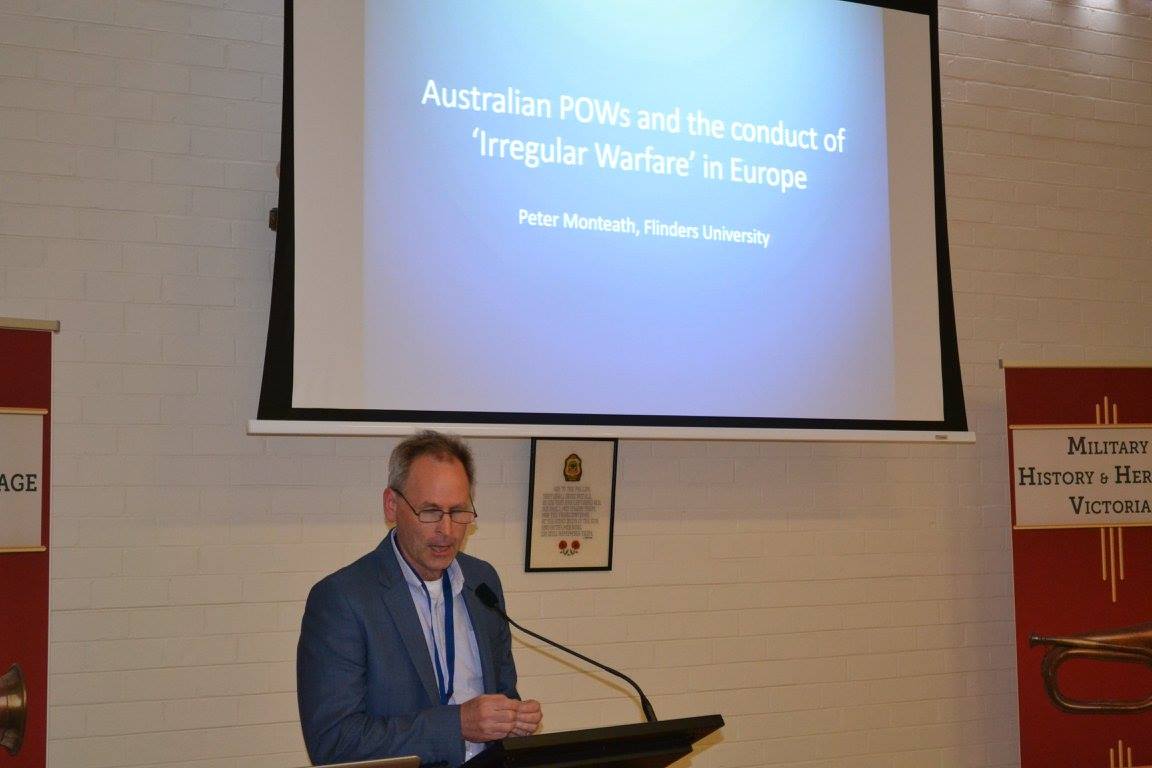
The final paper on WW II was presented by author and journalist, Roger Maynard, who spoke on the “story that needs to be told” about Dutch Ambon and ‘Gull Force’. This was about the 2/21st Battalion where of 1,150 personnel only 350 survived in the most brutal of the Japanese POW Camps. At the end of the war 30 guards were either executed or given long prison sentences.

Patty Wright of the Ex-POW & Relatives Association introduced the closing session dealing with two different ‘Perspectives’. First speaker was Neil Sharkey of The Shrine. He exposed the myths embodied in movie ‘The Great Escape’ by focussing on the fate of young Melbourne man Jimmy Catanach in his escape from Stalag Luft III. Catanach was captured as he tried to cross into Norway and as one of Hitler’s quota of 50 out of 73 escapees to be executed. He was ignominiously shot in the back in an anonymous field by Gestapo officer Post. Catanach’s three other fellow travellers were executed as well. Justice caught up with the offending Gestapo officers at the Nuremberg trials and all were executed.
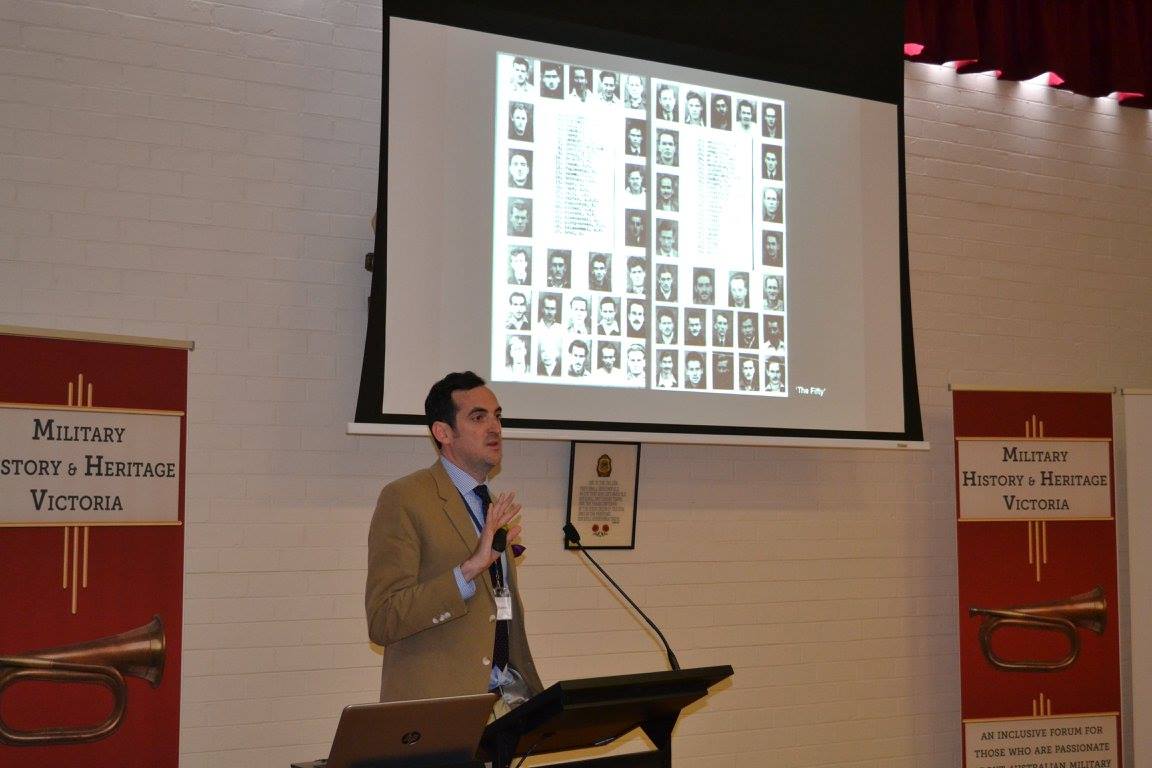
The second presentation by Australian War Memorial historian, Dr Lachlan Grant, provided some chilling information on POW ‘Hellships’ and submarine warfare in the Pacific and how ‘duelling’ governments intransigence over Red Cross proposals, led to huge loss of life in various unnecessary incidents. He explained that the most dangerous time for prisoners of the Japanese of World War II was during transit and no transit was more precarious than being shipped. Prisoners of the Japanese were transported in appalling conditions and their unmarked ships suffered from the necessary predation of American submarines under conditions of unrestricted submarine warfare. More Australians (19,000) died on board these ships than on the Burma railway (12,000).
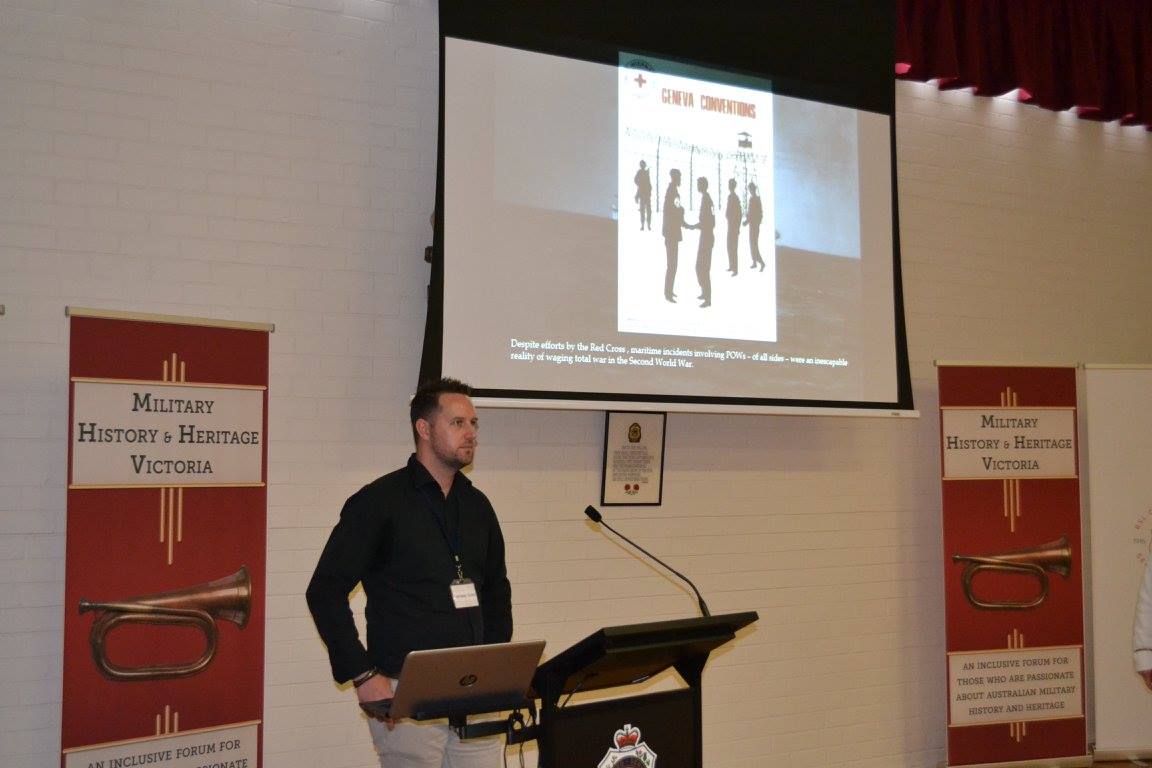
In closing MAJGEN Jim Barry reaffirmed MH&HV’s “relevance” to this subject conference and despite some of its disturbing content stated it needed to be presented. He then thanked all the presenters, the organising staff involved, Dr Andrew Kilsby and Mr Jason McGregor, and the participants.
The available proceedings will be published below as they become available.
In the Bag: Prisoners of War: 1915-1945
Saturday 12th November 2016
Welcome – Colonel Marcus Fielding MHHV President
Opening Remarks – Major General Jim Barry, AM, MBE, RFD, ED (Rtd), Patron MHHV
SESSION ONE | CONFLICT, CAPTIVITY & HOME
Keynote Paper: This War Never Ends: Australian Prisoners of War Come Home – Dr Michael McKernan, Historian and author
Paper: The POW Experience 1915-1945 – Major Craig Smith ARES, Australian Army History Unit, co-author of Aussie Soldier: Prisoners of War
SESSION TWO | WORLD WAR ONE
Session Chair: Dr Richard Trembath – Historian and author, University of Melbourne
Bold Bids for Freedom: Escape and Australian Prisoners of War in Germany, 1916-18 – Aaron Pegram, Senior Historian, Australian War Memorial
Paper: Prisoners of Australia: Crews from the Pfalz, Emden and Internees – Dr Andrew Kilsby, Military historian and author of The Forgotten Cruiser
SESSION THREE | WORLD WAR TWO
Session Chair: Major-General Mike O’Brien CSC, President RUSI (Vic)
Paper: Hellfire: prisoners of the Japanese – Cameron Forbes, Author and award-winning correspondent
Paper: Australian Prisoners of War in Hitler’s Reich – Dr Peter Monteath, Associate Professor, Flinders University
Paper: Ambon – The truth about one of the most brutal POW camps in World War Two – Roger Maynard, Author and journalist
SESSION FOUR | PERSPECTIVES
Session Chair: Pattie Wright – Hon. Sec., Ex-POW & Relatives Association (Vic) and author, The Men of the Line & Ray Parkin’s Odyssey
Paper: Hellships and submarine warfare in the Pacific – Dr Lachlan Grant, Senior Historian, Australian War Memorial
Closing Remarks – Major General Jim Barry, Patron MHHV Inc. and Colonel Marcus Fielding, President MHHV
Click Here to see more images from the Conference
Conference review by MAJGEN Jim Barry, Brent Taylor and Jason McGregor
Contact Military History and Heritage Victoria about this article.






